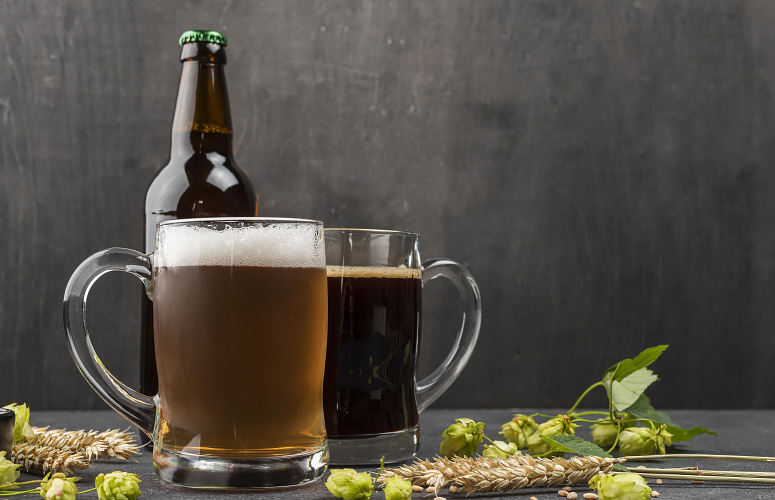Gluten presence in beers labelled "gluten-free"
A study by the UPV/EHU-University of the Basque Country finds that 7% of beers suitable for coeliacs contain amounts that exceed the legally acceptable limit
- Research
First publication date: 21/06/2021

Beer is the most widely consumed alcoholic beverage in the world and is the favourite drink of choice in the hospitality sector. However, because it is made from gluten-containing cereals, it poses a risk for people who have to follow a gluten-free diet. That is why it is crucially important to make use of validated analytical methods to check the gluten content of foods with the ultimate aim of protecting consumers with coeliac disease.
Coinciding with the week of Coeliac Disease Day, the journal Foods published an article entitled 'Gluten Assessment in Beers: Comparison by Different Commercial ELISA Kits and Evaluation of NIR Analysis as a Complementary Technique', carried out by staff in the UPV/EHU’s Gluten Analysis Laboratory in collaboration with the Asociació de Celiacs de Catalunya. This work explores the validity of current analytical methods designed to detect and quantify gluten; more than 100 beers, both with and without gluten, produced using different brewing processes (craft vs. industrial, ale vs. lager, wheat vs. barley, etc.) were assessed.
The including of the NIR (Near Infrared Spectroscopy) technique is what makes the research innovative; this technique is used in the food industry to rapidly quantify certain nutritional parameters, and the aim was to evaluate its potential use in the specification and complementary quantification of gluten in beers. "The results obtained show that the choice of kit is crucial when it comes to ensuring accurate quantification of gluten in gluten-free beers available on the market. We have seen that the ELISA Competitive R5 method, which detects the protein even if it has been subjected to several industrial processing stages, is the most suitable among the different tests tried out," explained Edurne Simón-Magro, technical director of the UPV/EHU’s Gluten Analysis Laboratory and head of the GLUTEN3S research group.
According to the analyses carried out in the study, 7 % of the beers labelled "gluten-free" contained amounts above the legally acceptable limit (20 mg/kg), posing a health risk for people who place their trust in such labelling. In the case of conventional, gluten-containing beers, the study showed that craft beers and lagers contained a higher amount of gluten than industrially-produced beers and ales.
So, as far as the analysis methods used are concerned, the data in the study do not support the hypothesis of proposing NIR analysis as a sensor for the quantification of gluten or discrimination of gluten-free samples in beers. As a result, breweries are currently unable to use the NIR analysis to expand monitoring throughout the brewing process. However, the work published just now concludes that the R5 Competitive ELISA kit is the most sensitive of the immunological methods used in the research to distinguish low levels of gluten in beer.
Bibliographic reference
- Gluten Assessment in Beers: Comparison by Different Commercial ELISA Kits and Evaluation of NIR Analysis as a Complementary Technique
- Foods 2021, 10(6), 1170
- DOI: 10.3390/foods10061170



